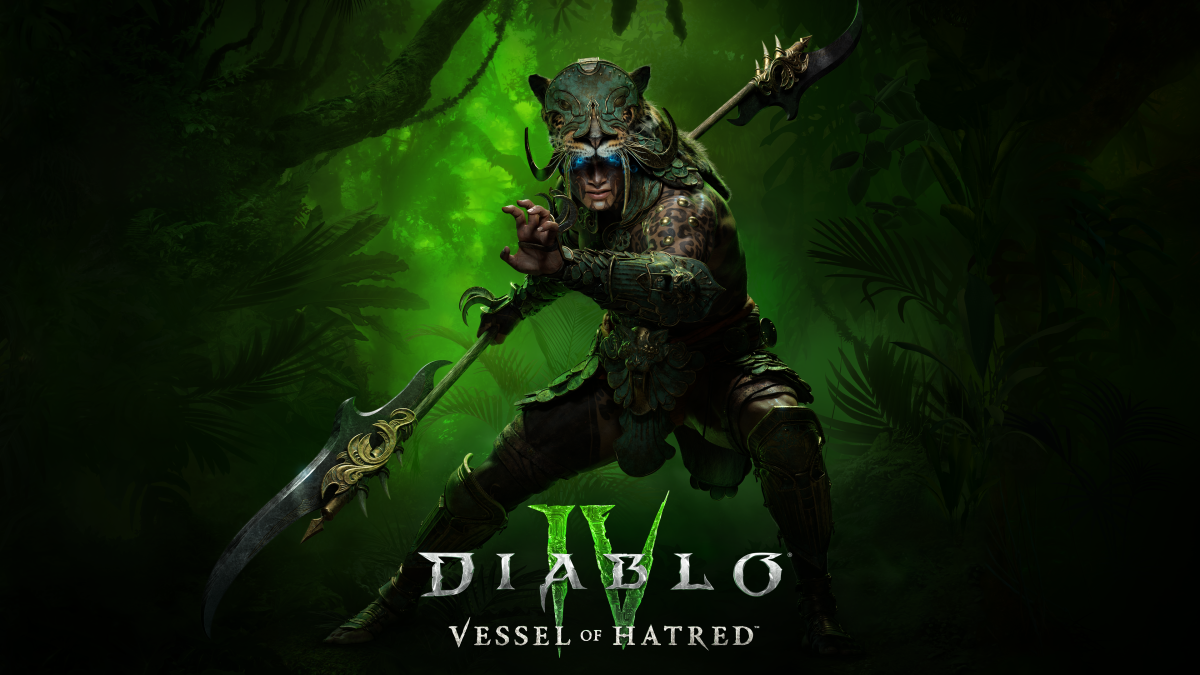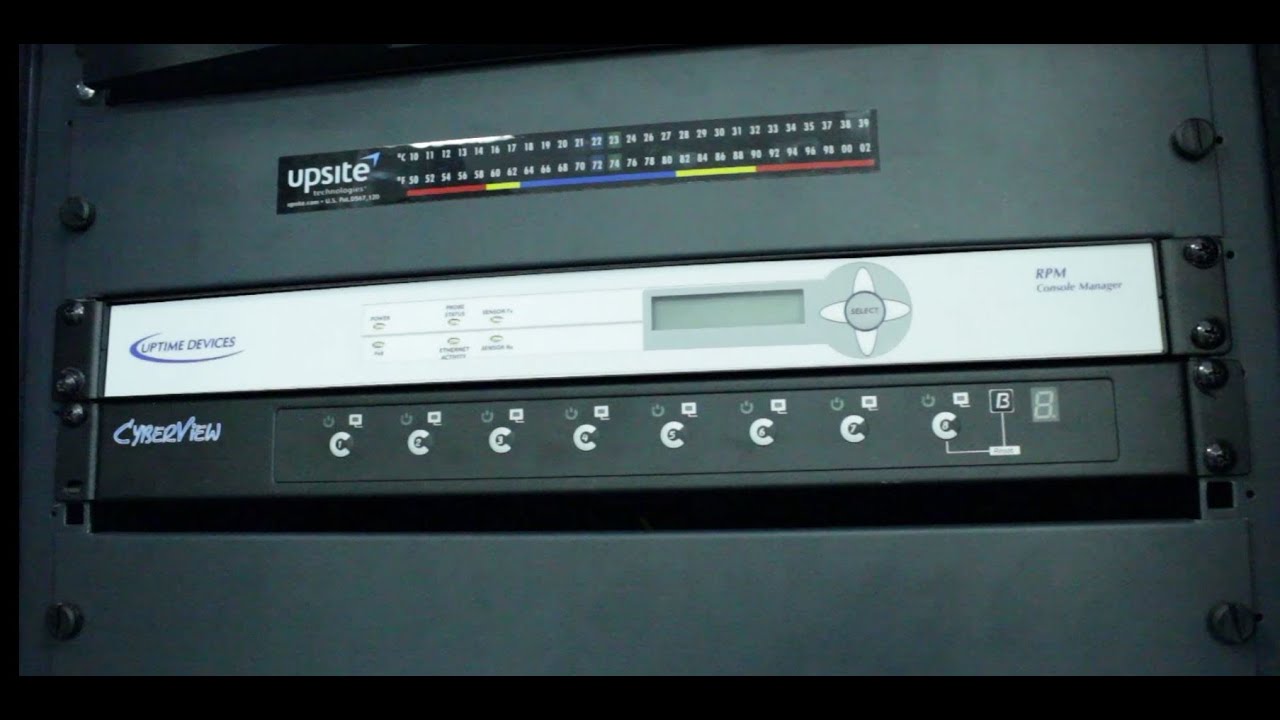This week, DirecTV announced it intends to buy Dish, Sling TV, and the rest of EchoStar’s television business for a dollar (while also taking on all of Dish’s debt), combining almost 20 million satellite TV subscribers from two companies that have been circling one another for decades.
Technology
Vessel of Hatred is the latest reason to start playing Diablo IV again

Ten years ago, the Reaper of Souls expansion completely reimagined and revived Diablo III. It overhauled huge swaths of the game, strengthening its foundation enough that D3 remained a fun time even as it stretched far past what should have been its expiration date.
Diablo IV has moved at a different pace. It managed to get through launch without the technical mishaps that plagued its predecessor, but it was still a game that landed somewhere short of its full potential on arrival. Our felt that, and I felt it in my own playthrough. Once I finished the campaign and started the grinding loop, I quickly got bored and abandoned my character.
But ahead of its first major expansion, Vessel of Hatred, Diablo IV is not the same as it was at launch. I’ve spent some time with the new content in Vessel of Hatred and while I’ll cover what the region of Nahantu brings to the table, I’m also taking this chance to take a broader look at the state of Diablo IV.
Vessel of Hatred adds companionship and customization
Vessel of Hatred introduces a new region, Nahantu, and a new class, Spiritborn. Nahantu is a jungle biome with lush greenery in some spaces and complete devastation in others. Basically, it’s your standard Diablo IV location. It also has several points of interest for the lore nerds out there.
Spiritborn is a completely new class in the Diablo universe and it’s a great addition. This is a close-range fighter with skills inspired by four Spirit Guardians: The gorilla abilities center defense and heavy hits, the jaguar delivers tempo-driven fire attacks, the eagle deals lightning damage via feathers, and the centipede is all about poison powers. Yes, centipede. It doesn’t sound like a fearsome creature, but trust me, those poison attacks are rad. The biggest thrill spawns from the ultimate abilities, where the actual Spirit Guardian appears to fight on your behalf. Having a spectral gorilla smash down and crush enemies is deeply satisfying in a way I didn’t know I needed.
In my run of D4, I’ve put the most hours into playing a Necromancer and a Sorcerer. They’re both loads of fun, but they feel at their strongest when they’re completely focused on one element or damage type. I’m not enamored of needing to completely redo my talent tree and paragon boards every time I encounter a unique item, so I appreciate that a Spiritborn really can pick and choose skills from across the four Guardians. That’s something Blizzard devs about in a livestream about the class design, and I’m pleased to report that the class-specific Spirit Hall makes it easy to get benefits from legendary and unique item powers without overhauling your entire rotation. That’s not to say optimal builds won’t emerge over time, but flexibility is a real win in the Spiritborn kit.
My other favorite addition in Vessel of Hatred is the Den, a quartet of mercenaries that can join you on your quests. For solo players, they act like the companions in Diablo III — you can pick one to follow you around and join your battles. Each has a miniature skill tree that you can customize to best match your own playstyle. A secondary mechanic, Reinforcement, allows you to access followers’ abilities even if you don’t or can’t have one equipped. Reinforcement allows you to pick a single ability from a single merc and set when you want them to use it. Their skills can map directly to when you use your own powers, or to more battle-specific conditions such as your character being injured or crowd controlled. My favorite combo started with me casting an eagle spell to yoink enemies into a clump, then my archer buddy would show up and fire off an incendiary grenade to scorch them all. But the combinations are pretty endless and easy to switch up on a whim.
The Den isn’t a deep game system and heavy-duty players probably won’t take long to max out all four companions. However, it offers yet another opportunity to customize your playthrough, and that’s where I think a Diablo game shines. Even though I used a default Spiritborn model, named her Test and never bothered to transmog gear, it still didn’t take long for me to start feeling attached to the character. This was my Spiritborn, my journey to save the world with my set of allies.
Sanctuary is a bleak place. Even when I play D4 with other people, the oppressive grimness of the settings and situations creates a feeling of “us against the world.” Maybe a few NPCs will be useful from time to time, but most of them are either going to betray us or lie to us or die on us. But for once, even while facing the most unbeatable foes, Vessel of Hatred made me feel connected. It’s in the expansion’s basic premise, that Neyrelle has chosen to shoulder an impossible burden for you and is going to try her damnedest to survive and succeed. It’s in the presence of the Den, where someone always has your back in battle. It’s in the refrain of your guide, Eru: Help is needed, so help is offered. It’s in the new Dark Citadel end-game dungeon, which you literally can’t complete without at least one other person. Even if you play Vessel of Hatred solo, you never feel alone.
There are other notable features arriving with Vessel of Hatred, and you’ll notice the stat crunch and new difficulty system if you’ve been keeping up with the game over the past year. Runewords are returning in a throwback to Diablo II, and there is of course more powerful gear to hunt down. But I see those updates as the culmination of a whole year of tweaks and revisions to Sanctuary.
A review of Diablo IV‘s first year
For better and for worse, Blizzard is a game studio that responds to the demands of its audience. “We’ve heard your feedback” may be the most-uttered phrase across the company’s events. I think there’s a balance to be struck in giving the community such a loud voice in a game’s direction, but in the case of Diablo IV, it has generally turned out well. When a lot of people fill the forums and say that a system is unfun, odds are good it’ll get reworked. And there definitely were some unfun points in Diablo IV.
The item system got a thorough and rewarding overhaul in Season 4. Activities like the Helltide and Nightmare dungeons are no longer gated to the highest difficulty levels. Even simple tweaks have done a lot to improve quality of life: At one point, the locations of the vendors changed so that the Blacksmith, Jeweler and Occultist are now all next to each other, meaning you aren’t mounting up to go across town just to swap out one item of gear. Nearly every update feels intended to give players more agency and more power.
A seasonal model also helps here, introducing fresh gameplay ideas every few months that the devs can learn from and possibly turn into permanent updates. For instance, Vessel of Hatred is launching with the start of a new season that adds Realmwalker monsters to chase across Sanctuary. Not every season revolutionizes the core gameplay — sometimes it’s just a glimpse into a faction with a short story thread to untangle — but these themed end-game additions can be reason enough to keep playing.
So, is it worth returning to Sanctuary?
For those who just want to experience the story, Vessel of Hatred is a worthwhile and natural continuation of the cliffhanger from the base game. For über-fans, I assume you live on the PTR and already have your own opinions about what’s coming (and you’ll play for hours no matter what).
I’m mostly speaking to the group in the middle, who have dabbled occasionally or never logged back in after the big Lilith battle. For these players, now’s a good time to return to Diablo IV. Explore the new story, try the Spiritborn; you’ll probably find plenty to enjoy.
A live game usually needs some time to find its footing, or to prove it has staying power beyond an initial fifteen minutes of fame. Vessel of Hatred is just the latest example of how Blizzard is committed to changing, improving and making Diablo IV a hell of a good time.
Technology
Prime Day Lego deals include up to 41 percent off Super Mario, Star Wars sets

October Prime Day is nearly here, and new early deals are popping up every day. Amazon uses October Prime Day to kickstart the holiday shopping season — even if you haven’t even thought about the holidays yet, you should give the latest Prime Day Lego deals a look. A number of Lego sets from the Super Mario, Star Wars and Harry Potter collections are already on sale for up to 41 percent off. There are even steeper savings on general Lego sets as well.
On the Star Wars side of things, this Spider Tank set is 36 percent off and down to only $32, which is the lowest it’s ever been. It includes 526 pieces that replicate the spider tank from season three of The Mandalorian, plus three minifigures: Din Djarin, Bo-Katan Kryze and Grogu. Once built, the spider tank has grabbing claws, flexible legs and a little cockpit in which one of the figures can sit. Also on sale is this Boarding The Tantive IV set in which you recreate the iconic scene from Star Wars: A New Hope. That will set you back $44, which represents a 20-percent discount.
In the Mario space, this Dixie Kong’s Jungle Jam expansion set has the biggest discount: 41 percent off and down to $16. It has 174 pieces along with buildable Dixie Kong and Squawks figures that both come with musical accessories. Mario fans who are old enough to have a work-from-home setup might appreciate this displayable Piranha Plant set that would look great in the background of any video conference call. It’s 20 percent off and down to $48.
Rounding things out with Harry Potter sets, this Hogwarts Castle and Grounds set is down to $136 and has never been cheaper. It includes 2,660 pieces that create a final product that’s over eight inches high, 13 inches wide and 10 inches deep. Plus, it comes with a cute, golden Hogwarts architect statue minifigure.
If you’re looking for more general Lego sets, two of the best deals we found are on the Classic Medium Creative Brick Box, down to $19, and the Lego City 2024 advent calendar, down to $26. The former includes 484 pieces in all different sizes and colors, and would make a great gift for anyone who just likes to build with Lego without following a set of instructions. As for the latter, you probably know someone who loves a good advent calendar this time of year, and this Lego one has 24 surprise gifts that include seasonal minifigures, mini builds and more.
Best Prime Day Lego deals
Follow @EngadgetDeals on Twitter for the latest tech deals and buying advice, and stay tuned to Engadget.com for all of the best tech deals coming out of October Prime Day 2024.
Servers computers
Rackmount Solutions: KVMs Overview (Keyboard, Video, Mouse)

Quick overview on KVM’s. KVM stands for keyboard, video, mouse. You also have KVM switches that allow you to “switch” from server to server at the press of a button while still using the same KVM. If you want a keyboard, video, mouse, and switch all packaged nice and neat together, you’d be looking for a KVM Combo.
Because of the many options – to assist your search for the perfect KVM, Rackmount Solutions created the “KVM Product Finder”. This tool helps narrow your search by KVM type, connectors, number of Consoles, number of ports and size of monitor.
In less than a minute you can select the exact product for your project without the hassle of navigating from page to page going through a checklist of the components you need.
The other option for finding the best KVM solution is by calling one of our experienced account managers – who are ready and willing to help at all times.
Rackmount Solutions is an industry leader in supplying server racks, server cabinets, wallmount racks, network racks, LAN racks, portable rackmount cases and accessory products for the IT/Network professional. We deliver rackmount storage server rack solutions for 19″, 23″, 24″ and 28″ wide equipment, as well as PCI Data Security Storage compliant cabinets and racks. We pride ourselves in providing quality customer service. Please call us toll free at 1-800-352-6631 and let us know how we can solve your rackmount needs.
http://www.rackmountsolutions.net/Rackmount_Keyboard_LCD_Entry.asp
sales@rackmountsolutions.net
Toll Free – 1.866.207.6631 .
source
Technology
The future of cooling: How Invensify’s innovative technology is set to disrupt multiple industries

With so many technological advances around, it’s hard to believe that some industries still use outdated manual processes to carry out crucial and sometimes life-dependent tasks such as transporting temperature-sensitive items.
Consider this: Traditional refrigeration and cooling systems rely heavily on compressors and chlorofluorocarbons (CFC) gases. These systems are energy-intensive and pose significant environmental challenges, contributing to greenhouse gas emissions. Not to mention, they are not easily portable, which leaves the cold chain industry relying on ice packs and gel-based insulation boxes to transport temperature-sensitive drugs.
So what is the solution? Invensify, led by founder and CEO Faizan Ahmed, has developed an alternative. Instead of using these traditional methods, their product, Insuridge, uses semiconductor technology to keep things cool. This means more reliable temperature control, less waste and a greener way to transport medicine and other essentials.
“If you’ve ever looked at the back of a traditional fridge, you’ll see compressors, CFC gas and coils – a lot of mechanics and fluids working together. What we’ve done is miniaturize all of that into a single chip, simplifying the cooling process. No more CFC gas, compressors or coils; it’s now just one solid-state chip cooling the fridge,” explains Ahmed.
By moving away from compressor-dependent models, Invensify significantly reduces energy consumption and greenhouse gas emissions, aligning with global efforts to combat climate change. Its product is not only quieter but also more durable and versatile, opening up possibilities for use in applications where traditional cooling methods are impractical or too cumbersome.
Invensify’s journey began with a personal problem. While traveling with his diabetic father, Faizan saw firsthand how difficult it was to maintain a stable, cool temperature for insulin using traditional ice packs. With a background in electrical engineering and solid-state physics, Faizan decided to create a more reliable and portable refrigeration solution. He recalls, “I started thinking, why is there no reliable solution to transport temperature-sensitive materials? Why are we still relying on ice? That led me to focus my attention on developing a portable system that could be used for transporting drugs and other materials. That led to Invensify.”
One of the standout features of Invensify’s technology is its energy efficiency. Operating on a compact 30Wh internal battery, Insuridge can maintain a consistent temperature for up to five days without requiring an external power source.
“These portable refrigeration systems are essentially plug-and-play. Simply plug them into a wall outlet, and they begin cooling the payload. Within five hours, the temperature drops to 2°C. Once unplugged, the unit maintains temperatures between 2°C and 8°C for up to 5 days using the internal battery,” explains Ahmed.
In addition to its power efficiency, Insuridge is also connected to the Internet, providing real-time tracking capabilities. Each unit is equipped with GPS and LTE connectivity, allowing users to monitor temperature conditions remotely via a cloud-based platform.
Invensify has strategically positioned itself to cater to both business-to-business (B2B) and consumer markets. Initially, the company focused on B2B clients, establishing partnerships with pharmaceutical and logistics companies. Looking forward, the company plans to enter the consumer market within the next six months by introducing a smaller, portable unit. This unit, designed for individual use, will enable consumers to safely store medications like insulin while traveling, directly addressing the personal struggle that inspired Faizan to start the company.
Invensify’s vision extends far beyond the pharmaceutical cold chain. Faizan envisions a future where their solid-state technology can cool AI chips. As artificial intelligence processors generate tremendous heat, Invensify’s compressor-free system could replace the current water-cooling methods.
The company also sees opportunities in the electric vehicle (EV) market. Currently, EV batteries are prone to overheating, which can limit their charge capacity and longevity. By integrating Invensify’s solid-state cooling technology, EV manufacturers could improve charging speeds and battery life, addressing some of the key concerns surrounding these vehicles.
“Our vision for the future is very simple. We’re in the business of creating power-efficient cooling systems,” says Ahmed. “We want to create a paradigm shift and become a company that is going to reshape how cooling is going to be done in the future.”
Invensify is on a mission to modernize the cooling industry, creating solutions that benefit industries and consumers alike. The company’s focus on developing power-efficient, compressor-free cooling systems is already changing industries such as logistics and healthcare – and it’s only the beginning. To learn more about Invensify, visit www.invensify.com.
VentureBeat newsroom and editorial staff were not involved in the creation of this content.
Source link
Technology
OpenAI secured more billions, but there’s still capital left for other startups

Welcome to Startups Weekly — your weekly recap of everything you can’t miss from the world of startups. Want it in your inbox every Friday? Sign up here.
This week once again brought us AI funding news, as well as some warnings: Some categories and stages are showing signs of overheating. Luckily, we also spotted some cool startups — literally.
Most interesting startup stories from the week

It may seem hard to believe, but OpenAI is still a startup, hence its recurring top spot here. There were other interesting stories this week, though.
BillionAI: OpenAI raised $6.6 billion at a $157 billion post-money valuation, in addition to securing a $4 billion revolving line of credit and launching a new interface. The company reportedly asked investors not to back rivals such as Anthropic and xAI, but OpenAI didn’t confirm. Meanwhile, Anthropic hired OpenAI co-founder Durk Kingma in a remote role.
Attack of the clones: Y Combinator faced criticism for backing AI code editor PearAI, whose CEO apologized for cloning another YC-backed, open source project without proper attribution and with a “flubbed” license.
Livestreamed shopping: Livestream shopping app Whatnot said its annual gross merchandise volume (GMV) surpassed $2 billion this year, a sign that there’s still hope for the live commerce business in the U.S.
Most interesting fundraises this week

Some companies prefer to raise funding under the radar; others even operate underwater.
Deep end: AI coding startup Poolside raised a $500 million Series B round of funding led by Bain Capital Ventures, with participation from eBay and Nvidia. This allowed Poolside to bring 10,000 Nvidia GPUs online to train future models, CEO Jason Warner said.
Cool water: Barcelona-based immersion cooling startup Submer raised $55.5 million to get more customers for its solution, which is already used by hyperscalers, telecom companies, and other large corporations.
11x meets a16z: 11x.ai, a startup that develops AI sales bots, secured a Series B round of funding of approximately $50 million led by Andreessen Horowitz, TechCrunch learned.
Stealthy funding: Cloud backup startup Eon came out of stealth and revealed it already reached a $750 million post-money valuation after raising three rounds of funding, including a $77 million Series B.
More stealthy funding: Series, a generative AI game-development platform, quietly raised a $28 million Series A round of funding from Netflix, Dell, a16z, and others.
Most interesting VC and fund news this week

Trim season: Veteran venture firm CRV returned $275 million from its $500 million late-stage Select fund to investors, citing overvaluation of mature startups. This follows a similar move by India’s Peak XV, which reduced its fund size and fees amid signs of overheating.
Launching: Former Y Combinator managing director and Twitter executive Ali Rowghani is launching Maxq, a new venture firm targeting $250 million for its debut fund.
NY bullish: Index Ventures is looking to hire another New York-based investor with plans to add three or four new people to its local team within the next year, partner Shardul Shah told TechCrunch.
Last but not least

Talking to TechCrunch global managing editor Matt Rosoff ahead of this year’s Startup Battlefield 200 at TechCrunch Disrupt, New York tech investor and serial entrepreneur Kevin Ryan shared some thoughts on when and whether founders should sell their company. His conviction: More of them should.
Servers computers
37u Server Rack by Great Lakes

37u 19 in Server Rack Cage – Used
With networking and telecommunications equipment in mind, the Great Lakes GL720E-2936 is just the rack enclosure for small and medium sized businesses.
It is designed with square-holed vertical mounting rails making this rack flexible for a variety of vendors 19 inch rack mounted equipment. It requires a cage nut, if you want screw threads in the holes.
This 19 in rack stands 72 inches high (74.5 inches high with wheels). The 37u allows for 64.75 inches of equipment to be mounted.
At 29 inches wide there is ample room for cables and power distribution. This can make it quicker and easier your tech people to install and service the equipment.
We have it here, in stock – used: http://www.computerstructures.com/37u-Great-Lakes-E-Series-Enclosure-GL720E-2936.html
As a mid-sized sever rack, at 36 inches deep, this is one of the fine rackmount solutions for storage of your computer equipment. .
source
Technology
From AOL Time Warner to DirecTV and Dish: 20 years of media mergers

But it’s not just DirecTV and Dish. AT&T, Comcast, Verizon, General Electric, GM, News Corp, Tumblr, and the various incarnations of Time Warner have also gotten mixed up or split up while trying to bridge the gap between communications and media over the years.
Here’s a partial timeline of the events that might end with these two companies joining together at last.
AOL, meet Time Warner
At the turn of the 21st century, it was obvious that the internet was the future. Instant communication between anyone in the world and the idea of digital distribution was irresistible, and AOL seemed on top of the world.
What better way for Time Warner to get in on the ground floor than to join forces with the company that rode to the top, one 60-hours-of-free-internet CD at a time? By 2009, it was all over.
The satellite era is upon us, and the telecoms enter the chat
Comcast, Verizon, and AT&T’s acquisitions were an attempt to take over the media landscape built on their networks, with varying degrees of success, delivering brands like Oath, WarnerMedia, and Peacock as well as the entirely forgettable Go90.
Welcome to the streaming future
Over the next few years, AT&T executives float bad ideas for Game of Thrones, like shooting “snackable” vertical video versions. The company eventually introduced HBO Max before demoting HBO from its streaming brand, renaming the service Max.
You know what happened next: Netflix never looked back on its path to 270 million global subscribers, and Disney reintroduced the bundle for streaming. At the same time, both Quibi and CNN Plus evaporated too quickly to make an impact.
Ultimately, Verizon sold what was left of Oath to Apollo Global Management, and then AT&T shipped WarnerMedia off into a partnership with Discovery. Now, AT&T is selling all of DirecTV to TPG. That’s the private equity firm behind this new $1 attempt to merge with Dish Network again, while EchoStar can continue on its quest to build a nationwide Open RAN 5G network.
We’ll see everyone back here in another 20 years to find out how it all worked out, okay?
Disclosure: Comcast is an investor in Vox Media, The Verge’s parent company.
-

 Womens Workouts2 weeks ago
Womens Workouts2 weeks ago3 Day Full Body Women’s Dumbbell Only Workout
-

 Science & Environment2 weeks ago
Science & Environment2 weeks agoHow to unsnarl a tangle of threads, according to physics
-

 Science & Environment2 weeks ago
Science & Environment2 weeks agoHyperelastic gel is one of the stretchiest materials known to science
-

 Technology2 weeks ago
Technology2 weeks agoWould-be reality TV contestants ‘not looking real’
-

 Science & Environment2 weeks ago
Science & Environment2 weeks agoMaxwell’s demon charges quantum batteries inside of a quantum computer
-

 Science & Environment2 weeks ago
Science & Environment2 weeks ago‘Running of the bulls’ festival crowds move like charged particles
-

 News2 weeks ago
News2 weeks agoOur millionaire neighbour blocks us from using public footpath & screams at us in street.. it’s like living in a WARZONE – WordupNews
-

 Science & Environment2 weeks ago
Science & Environment2 weeks agoHow to wrap your mind around the real multiverse
-

 Science & Environment2 weeks ago
Science & Environment2 weeks agoSunlight-trapping device can generate temperatures over 1000°C
-

 Science & Environment2 weeks ago
Science & Environment2 weeks agoITER: Is the world’s biggest fusion experiment dead after new delay to 2035?
-

 Science & Environment2 weeks ago
Science & Environment2 weeks agoLiquid crystals could improve quantum communication devices
-

 Science & Environment2 weeks ago
Science & Environment2 weeks agoQuantum ‘supersolid’ matter stirred using magnets
-

 Science & Environment2 weeks ago
Science & Environment2 weeks agoPhysicists are grappling with their own reproducibility crisis
-

 Science & Environment2 weeks ago
Science & Environment2 weeks agoQuantum forces used to automatically assemble tiny device
-

 News2 weeks ago
News2 weeks agoYou’re a Hypocrite, And So Am I
-
News3 weeks ago
the pick of new debut fiction
-

 Science & Environment2 weeks ago
Science & Environment2 weeks agoWhy this is a golden age for life to thrive across the universe
-

 Sport2 weeks ago
Sport2 weeks agoJoshua vs Dubois: Chris Eubank Jr says ‘AJ’ could beat Tyson Fury and any other heavyweight in the world
-

 Science & Environment2 weeks ago
Science & Environment2 weeks agoCaroline Ellison aims to duck prison sentence for role in FTX collapse
-

 Science & Environment2 weeks ago
Science & Environment2 weeks agoNuclear fusion experiment overcomes two key operating hurdles
-

 Science & Environment2 weeks ago
Science & Environment2 weeks agoTime travel sci-fi novel is a rip-roaringly good thought experiment
-

 Technology6 days ago
Technology6 days ago‘From a toaster to a server’: UK startup promises 5x ‘speed up without changing a line of code’ as it plans to take on Nvidia, AMD in the generative AI battlefield
-

 MMA6 days ago
MMA6 days agoConor McGregor challenges ‘woeful’ Belal Muhammad, tells Ilia Topuria it’s ‘on sight’
-

 Science & Environment2 weeks ago
Science & Environment2 weeks agoLaser helps turn an electron into a coil of mass and charge
-

 Science & Environment2 weeks ago
Science & Environment2 weeks agoNerve fibres in the brain could generate quantum entanglement
-

 Football6 days ago
Football6 days agoFootball Focus: Martin Keown on Liverpool’s Alisson Becker
-
Business6 days ago
Eurosceptic Andrej Babiš eyes return to power in Czech Republic
-

 News2 weeks ago
News2 weeks agoIsrael strikes Lebanese targets as Hizbollah chief warns of ‘red lines’ crossed
-

 Science & Environment2 weeks ago
Science & Environment2 weeks agoUK spurns European invitation to join ITER nuclear fusion project
-

 CryptoCurrency2 weeks ago
CryptoCurrency2 weeks agoCardano founder to meet Argentina president Javier Milei
-

 Science & Environment2 weeks ago
Science & Environment2 weeks agoMeet the world's first female male model | 7.30
-

 News2 weeks ago
News2 weeks ago▶️ Media Bias: How They Spin Attack on Hezbollah and Ignore the Reality
-
Business2 weeks ago
JPMorgan in talks to take over Apple credit card from Goldman Sachs
-

 Science & Environment2 weeks ago
Science & Environment2 weeks agoFuture of fusion: How the UK’s JET reactor paved the way for ITER
-

 Womens Workouts2 weeks ago
Womens Workouts2 weeks agoBest Exercises if You Want to Build a Great Physique
-

 News2 weeks ago
News2 weeks agoWhy Is Everyone Excited About These Smart Insoles?
-

 Technology2 weeks ago
Technology2 weeks agoRobo-tuna reveals how foldable fins help the speedy fish manoeuvre
-

 CryptoCurrency2 weeks ago
CryptoCurrency2 weeks agoEthereum is a 'contrarian bet' into 2025, says Bitwise exec
-

 Science & Environment2 weeks ago
Science & Environment2 weeks agoA new kind of experiment at the Large Hadron Collider could unravel quantum reality
-

 Science & Environment2 weeks ago
Science & Environment2 weeks agoRethinking space and time could let us do away with dark matter
-

 Health & fitness2 weeks ago
Health & fitness2 weeks agoThe secret to a six pack – and how to keep your washboard abs in 2022
-

 Science & Environment2 weeks ago
Science & Environment2 weeks agoA slight curve helps rocks make the biggest splash
-

 Science & Environment2 weeks ago
Science & Environment2 weeks agoQuantum time travel: The experiment to ‘send a particle into the past’
-

 News3 weeks ago
News3 weeks ago▶️ Hamas in the West Bank: Rising Support and Deadly Attacks You Might Not Know About
-

 Science & Environment2 weeks ago
Science & Environment2 weeks agoWhy we need to invoke philosophy to judge bizarre concepts in science
-

 CryptoCurrency2 weeks ago
CryptoCurrency2 weeks agoBitcoin miners steamrolled after electricity thefts, exchange ‘closure’ scam: Asia Express
-

 CryptoCurrency2 weeks ago
CryptoCurrency2 weeks agoDorsey’s ‘marketplace of algorithms’ could fix social media… so why hasn’t it?
-

 CryptoCurrency2 weeks ago
CryptoCurrency2 weeks agoDZ Bank partners with Boerse Stuttgart for crypto trading
-

 CryptoCurrency2 weeks ago
CryptoCurrency2 weeks agoLow users, sex predators kill Korean metaverses, 3AC sues Terra: Asia Express
-

 CryptoCurrency2 weeks ago
CryptoCurrency2 weeks agoBitcoin bulls target $64K BTC price hurdle as US stocks eye new record
-

 Womens Workouts2 weeks ago
Womens Workouts2 weeks agoEverything a Beginner Needs to Know About Squatting
-

 News2 weeks ago
News2 weeks agoFour dead & 18 injured in horror mass shooting with victims ‘caught in crossfire’ as cops hunt multiple gunmen
-

 Womens Workouts2 weeks ago
Womens Workouts2 weeks ago3 Day Full Body Toning Workout for Women
-

 Travel1 week ago
Travel1 week agoDelta signs codeshare agreement with SAS
-

 Servers computers1 week ago
Servers computers1 week agoWhat are the benefits of Blade servers compared to rack servers?
-

 Science & Environment1 week ago
Science & Environment1 week agoX-rays reveal half-billion-year-old insect ancestor
-

 Politics1 week ago
Politics1 week agoHope, finally? Keir Starmer’s first conference in power – podcast | News
-
Business6 days ago
Should London’s tax exiles head for Spain, Italy . . . or Wales?
-

 Technology6 days ago
Technology6 days agoThe best robot vacuum cleaners of 2024
-

 Sport2 weeks ago
Sport2 weeks agoUFC Edmonton fight card revealed, including Brandon Moreno vs. Amir Albazi headliner
-

 Technology2 weeks ago
Technology2 weeks agoiPhone 15 Pro Max Camera Review: Depth and Reach
-

 News2 weeks ago
News2 weeks agoBrian Tyree Henry on voicing young Megatron, his love for villain roles
-

 Health & fitness2 weeks ago
Health & fitness2 weeks agoThe maps that could hold the secret to curing cancer
-

 Science & Environment2 weeks ago
Science & Environment2 weeks agoBeing in two places at once could make a quantum battery charge faster
-

 CryptoCurrency2 weeks ago
CryptoCurrency2 weeks agoRedStone integrates first oracle price feeds on TON blockchain
-

 CryptoCurrency2 weeks ago
CryptoCurrency2 weeks agoBlockdaemon mulls 2026 IPO: Report
-

 CryptoCurrency2 weeks ago
CryptoCurrency2 weeks agoCoinbase’s cbBTC surges to third-largest wrapped BTC token in just one week
-
Politics2 weeks ago
UK consumer confidence falls sharply amid fears of ‘painful’ budget | Economics
-

 Science & Environment2 weeks ago
Science & Environment2 weeks agoCNN TÜRK – 🔴 Canlı Yayın ᴴᴰ – Canlı TV izle
-

 News1 week ago
News1 week agoUS Newspapers Diluting Democratic Discourse with Political Bias
-

 Science & Environment2 weeks ago
Science & Environment2 weeks agoHow one theory ties together everything we know about the universe
-

 CryptoCurrency2 weeks ago
CryptoCurrency2 weeks agoCrypto scammers orchestrate massive hack on X but barely made $8K
-

 Science & Environment2 weeks ago
Science & Environment2 weeks agoTiny magnet could help measure gravity on the quantum scale
-

 Science & Environment2 weeks ago
Science & Environment2 weeks agoHow do you recycle a nuclear fusion reactor? We’re about to find out
-

 CryptoCurrency2 weeks ago
CryptoCurrency2 weeks agoTelegram bot Banana Gun’s users drained of over $1.9M
-

 CryptoCurrency2 weeks ago
CryptoCurrency2 weeks agoVonMises bought 60 CryptoPunks in a month before the price spiked: NFT Collector
-

 CryptoCurrency2 weeks ago
CryptoCurrency2 weeks agoSEC asks court for four months to produce documents for Coinbase
-

 CryptoCurrency2 weeks ago
CryptoCurrency2 weeks ago‘Silly’ to shade Ethereum, the ‘Microsoft of blockchains’ — Bitwise exec
-

 CryptoCurrency2 weeks ago
CryptoCurrency2 weeks ago‘No matter how bad it gets, there’s a lot going on with NFTs’: 24 Hours of Art, NFT Creator
-
Business2 weeks ago
How Labour donor’s largesse tarnished government’s squeaky clean image
-
Politics2 weeks ago
‘Appalling’ rows over Sue Gray must stop, senior ministers say | Sue Gray
-

 News2 weeks ago
News2 weeks agoBrian Tyree Henry on voicing young Megatron, his love for villain roles
-

 Womens Workouts2 weeks ago
Womens Workouts2 weeks agoHow Heat Affects Your Body During Exercise
-

 Womens Workouts2 weeks ago
Womens Workouts2 weeks agoKeep Your Goals on Track This Season
-

 TV2 weeks ago
TV2 weeks agoCNN TÜRK – 🔴 Canlı Yayın ᴴᴰ – Canlı TV izle
-

 News2 weeks ago
News2 weeks agoChurch same-sex split affecting bishop appointments
-

 Politics2 weeks ago
Politics2 weeks agoTrump says he will meet with Indian Prime Minister Narendra Modi next week
-

 Technology2 weeks ago
Technology2 weeks agoFivetran targets data security by adding Hybrid Deployment
-

 Science & Environment2 weeks ago
Science & Environment2 weeks agoSingle atoms captured morphing into quantum waves in startling image
-

 Politics2 weeks ago
Politics2 weeks agoLabour MP urges UK government to nationalise Grangemouth refinery
-

 News3 weeks ago
News3 weeks agoNew investigation ordered into ‘doorstep murder’ of Alistair Wilson
-

 CryptoCurrency2 weeks ago
CryptoCurrency2 weeks agoLouisiana takes first crypto payment over Bitcoin Lightning
-

 CryptoCurrency2 weeks ago
CryptoCurrency2 weeks ago$12.1M fraud suspect with ‘new face’ arrested, crypto scam boiler rooms busted: Asia Express
-

 Science & Environment2 weeks ago
Science & Environment2 weeks agoA tale of two mysteries: ghostly neutrinos and the proton decay puzzle
-

 CryptoCurrency2 weeks ago
CryptoCurrency2 weeks agoDecentraland X account hacked, phishing scam targets MANA airdrop
-

 CryptoCurrency2 weeks ago
CryptoCurrency2 weeks agoBitcoin price hits $62.6K as Fed 'crisis' move sparks US stocks warning
-

 CryptoCurrency2 weeks ago
CryptoCurrency2 weeks agoCertiK Ventures discloses $45M investment plan to boost Web3
-

 CryptoCurrency2 weeks ago
CryptoCurrency2 weeks agoBeat crypto airdrop bots, Illuvium’s new features coming, PGA Tour Rise: Web3 Gamer
-

 CryptoCurrency2 weeks ago
CryptoCurrency2 weeks agoVitalik tells Ethereum L2s ‘Stage 1 or GTFO’ — Who makes the cut?
-

 CryptoCurrency2 weeks ago
CryptoCurrency2 weeks agoEthereum falls to new 42-month low vs. Bitcoin — Bottom or more pain ahead?

You must be logged in to post a comment Login